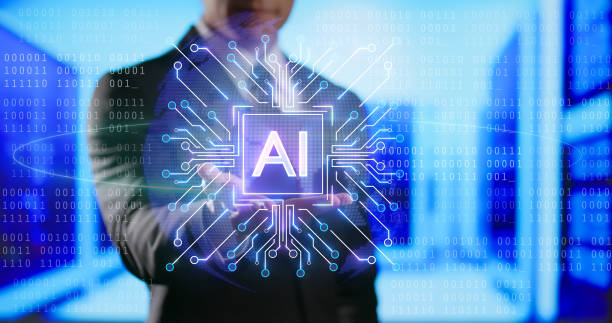Introduction to On-Page SEO and Its Importance
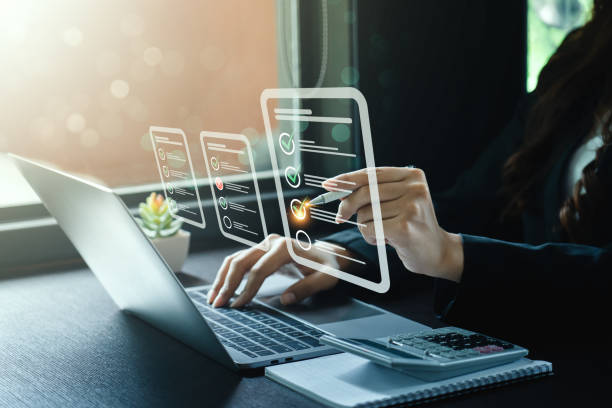
On-Page SEO is the backbone of any search engine optimization strategy.
This process involves optimizing all elements on your website that can affect your site’s ranking in search results.
From title tags and meta descriptions to content and URL structure, every part of your website plays a vital role in how search engines understand the topic and quality of your page.
The importance of #On-Page SEO goes beyond just helping with ranking; it helps search engines properly index your content and display it to the right users.
Without a strong on-page SEO strategy, even the best content in the world might never be seen.
Learning the principles of on-page SEO is essential for every online business owner or digital marketer to attract targeted organic traffic to their website.
This involves understanding user needs and search engine algorithms to create pages that are appealing to both users and crawling bots.
In this article, we will delve deep into various aspects of on-page SEO and provide practical solutions for improving it.
From keyword optimization to internal link structure, everything is covered in this comprehensive guide.
Are you dissatisfied with the low conversion rate of visitors to customers on your e-commerce site?
Solve this problem forever with professional e-commerce website design by Rasaweb!
✅ Increase visitor-to-customer conversion rate
✅ Create excellent user experience and build customer trust
⚡ Get free consultation
Keyword Research: The Foundation of Any Successful On-Page SEO

Keyword research is the first and most crucial step in any effective on-page SEO strategy.
Before you even write a single word on the page, you need to know what your target audience is looking for and what phrases they use to search.
This process involves identifying keywords and phrases that have the most potential to attract relevant traffic to your website.
Appropriate keywords form the backbone of your content and help search engines understand the main topic of your page. For strong on-page SEO, you shouldn’t just rely on high-volume keywords; long-tail keywords, which are more specific and come with a clearer search intent, often have higher conversion rates and less competition.
Using keyword research tools like Google Keyword Planner, Ahrefs, Semrush, or KWFinder can help you find new ideas and analyze competition.
After identifying target keywords, you should naturally and logically use them in your title, meta description, headings, and the main body text of your page.
This signals to search algorithms that your content is relevant to that topic and is worth showing to users.
Thorough keyword research lays the groundwork for a powerful on-page SEO campaign.
On-Page Optimization Elements: Tags and Structure
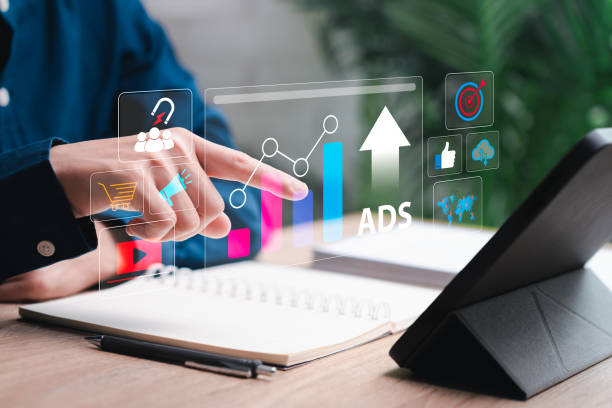
Optimizing on-page elements is an inseparable part of on-page SEO that directly affects how search engines understand your content.
These elements include the Title Tag, Meta Description, Heading Tags (H1-H6), and URL structure.
The title tag is the most important signal for search engines and should include the page’s main keyword and be engaging to encourage users to click.
Optimizing each of these elements is crucial for increasing your website’s visibility. The meta description is a short summary of the page’s content that appears below the title in search results, and although it doesn’t directly impact ranking, it is very important for the click-through rate (CTR).
Heading tags (H1, H2, H3, etc.) define the structure of your content and help search engines understand the information hierarchy; H1 should contain the main keyword and be used only once per page.
The URL structure should also be short, descriptive, and contain the keyword.
An optimized URL is not only more readable for users but also helps search engines understand the page content. Correct use of these elements in on-page SEO sends strong signals to search engines and significantly increases your chances of being seen in search results.
This table will help you better understand the importance of each of these elements.
| On-Page SEO Element | Importance | Key Recommendation |
|---|---|---|
| Title Tag | Very High (First Ranking Signal) | Includes main keyword, engaging, and less than 60 characters. |
| Meta Description | Medium (Impact on Click-Through Rate) | An engaging summary of content, includes keywords, less than 155 characters. |
| Heading Tags (H1-H6) | High (Content Structure and Readability) | H1 once with main keyword, logical use of H2-H6. |
| URL Structure | Medium (Readability and Relevance) | Short, descriptive, contains keyword, no extra characters. |
Content Optimization Strategies: Quality and Relevance
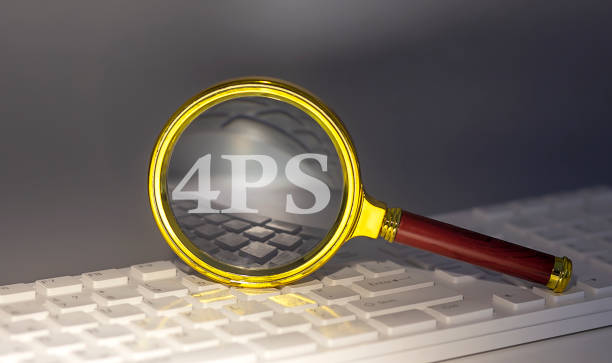
Content is king, and this principle applies to on-page SEO more than anywhere else.
Producing high-quality, valuable content relevant to user needs is the cornerstone of any successful on-page optimization strategy.
Your content should not only provide comprehensive and accurate information but also be written in a way that is engaging and readable for your target audience.
This includes using natural language, short paragraphs, bulleted lists, and subheadings to improve readability.
Search engines are increasingly emphasizing the quality and depth of content; therefore, avoid shallow and copied content.
Strategic use of main keywords and their synonyms (LSI Keywords) throughout the text helps search engines fully understand the main topic of your content.
However, avoid keyword stuffing, as this practice can harm your ranking.
The main goal is to provide genuine value to the reader.
Good content not only boosts your ranking but also keeps users on your site longer, reduces bounce rate, and leads to social sharing.
Content optimization for on-page SEO goes beyond simply inserting keywords; it involves providing a rich experience and answering user questions with accuracy and depth.
Losing business opportunities due to an outdated website? With Rasaweb, solve the problem of not attracting potential customers through your website forever!
✅ Attract more high-quality leads
✅ Increase brand credibility in the eyes of customers
⚡ Get free corporate website design consultation
Image Optimization and User Experience in On-Page SEO
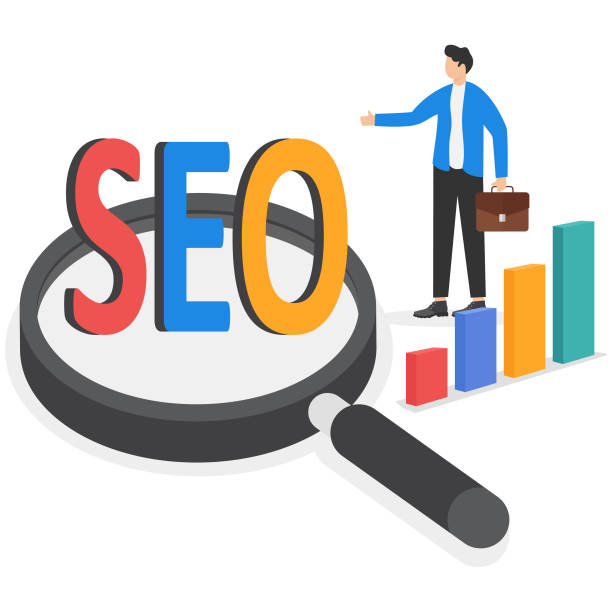
Images are an important part of the user experience on websites, and optimizing them plays a significant role in on-page SEO.
Images not only add visual appeal to your content but can also drive considerable traffic to your site through image search.
To optimize images, you should first reduce their file size as much as possible to increase page loading speed, without severely compromising image quality.
Using modern formats like WebP can also be very effective.
The most important aspect of image SEO is using an appropriate and descriptive Alt tag. The Alt tag is text that is displayed if the image fails to load and helps search engines understand the image content.
This tag should include a keyword relevant to the image and accurately describe the visual content.
Naming image files with relevant and descriptive keywords is another important tip.
In addition to images, user experience (UX) is also a key factor in on-page SEO.
A site with a good user interface, easy navigation, and fast loading speed not only keeps users satisfied but also sends positive signals to search engines.
Google is increasingly prioritizing Core Web Vitals, which are directly related to UX.
Improving these aspects indirectly helps your on-page SEO.
Internal Linking Structure and Its Impact on On-Page SEO

Internal linking structure is one of the most powerful tools in the on-page SEO toolbox, often overlooked.
Internal links are connections that link different pages of your website to each other.
These links not only help users easily navigate your site and find more information but also help search engines discover, index, and understand the hierarchy of your pages.
A strong internal linking structure distributes “link equity” across your entire site, meaning SEO value is passed from more powerful pages to newer or less visible ones.
Using descriptive and keyword-relevant anchor texts in internal links is crucial; this signals to search engines what the linked page is about.
For example, instead of “Click here,” it’s better to use “Comprehensive Guide to On-Page SEO.”
Planning a hierarchical and logical linking structure that leads from the homepage to categories, and then to more detailed pages, not only benefits users but also helps search bots understand the depth and breadth of your content.
This vital part of on-page SEO directly affects the crawlability and indexability of your pages and can improve your site’s overall ranking.
Technical On-Page SEO and Factors Beyond Content
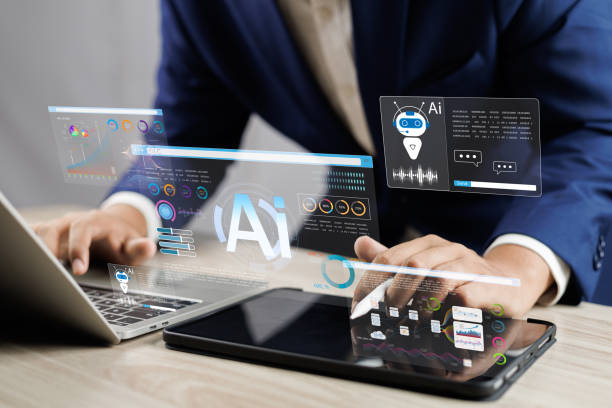
Technical on-page SEO deals with aspects of website optimization that directly involve the code and technical structure of the site, and may not be visible to ordinary users, but are crucial for search engines.
This includes items such as Schema Markup, Core Web Vitals, and Robots.txt and Sitemap.xml files.
Schema Markup (structured data) are codes you add to your website to help search engines better understand your content and display it in a richer way in search results (like star ratings, product prices, etc.).
Correct implementation of Schema Markup can give you a significant competitive advantage in on-page SEO. Core Web Vitals, which include LCP (Largest Contentful Paint), FID (First Input Delay), and CLS (Cumulative Layout Shift), are important Google metrics for measuring user experience.
Improving these metrics directly affects your SEO ranking.
The Robots.txt file tells search engines which parts of your site should not be crawled, while Sitemap.xml provides them with a map of all important pages on your site to be easily indexed.
Recent Google updates place more emphasis on technical aspects of on-page SEO, and neglecting them can lead to a drop in ranking.
This table shows some key technical on-page SEO factors.
| Technical On-Page SEO Factor | Description | Why is it important? |
|---|---|---|
| Schema Markup | Adding structured codes to HTML | Displaying rich information in search results (Rich Snippets). |
| Core Web Vitals | LCP, FID, CLS | Google’s metrics for measuring user experience and speed. |
| Robots.txt | A file to control bot crawling | Preventing crawling and indexing of irrelevant or duplicate pages. |
| Sitemap.xml | Site map for search engines | Helps search engines discover and index all important pages. |
Monitoring and Analyzing On-Page SEO Performance
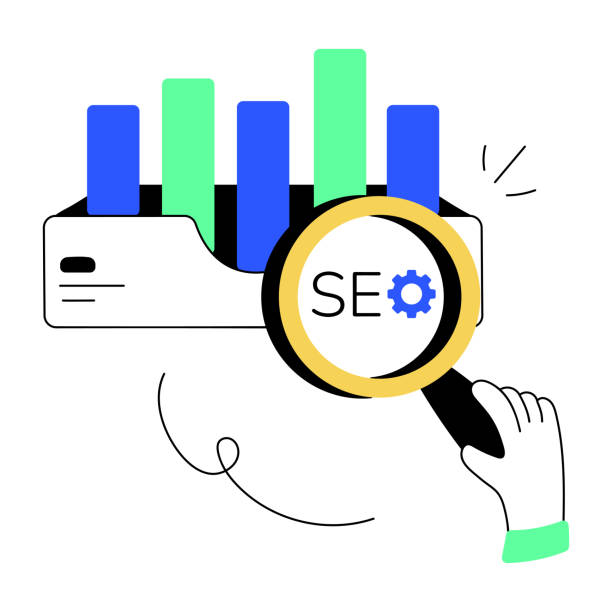
After implementing on-page SEO strategies, it’s time to monitor and analyze performance.
This stage is crucial for understanding the effectiveness of your efforts and identifying opportunities for improvement.
Tools like Google Search Console and Google Analytics provide valuable information about how users interact with your site, the keywords they find you with, and potential technical issues.
Google Search Console allows you to examine your keyword performance, click-through rates, and site index coverage. It also displays warnings about technical issues such as crawl errors or invalid pages.
Google Analytics also provides data on traffic, user behavior (such as time on page, bounce rate), and traffic sources.
By analyzing this data, you can determine which pages are performing well and which need further optimization.
For example, if a page has good traffic but a high bounce rate, its content may not be accurately answering the user’s question, or its user experience is poor.
Regular monitoring helps you quickly react to algorithm changes or user behavior and adapt your on-page SEO strategy. This is an ongoing process that leads to continuous improvement in your results.
Do you have an e-commerce site, but your sales are not as expected? Rasaweb solves your problem forever with professional e-commerce website design!
✅ Significant increase in conversion rate and sales
✅ Unparalleled user experience for your customers
⚡ Click to get free consultation with Rasaweb!
Common Mistakes in On-Page SEO and How to Avoid Them

On the path to optimizing on-page SEO, there are common mistakes that can render your efforts fruitless.
Recognizing and avoiding these mistakes is essential for long-term success.
One of the most common errors is “keyword stuffing” or over-stuffing keywords.
This practice not only makes your content unnatural and unpleasant for the reader but can also be identified by search engines as a spam tactic, leading to penalties.
Instead, use keywords naturally and in the context of your content.
Another mistake is neglecting user experience.
Low site speed, complex navigation, and non-responsive design can drive users away and send negative signals to Google, even if your content is excellent.
Duplicate Content is also a serious problem that can harm your ranking; ensure that each page has unique content or use canonical tags to specify the original version.
Neglecting image optimization (such as not using Alt tags) and the lack of a proper internal linking structure can also hurt your on-page SEO.
Finally, not regularly updating content and failing to monitor SEO performance are also common mistakes.
By avoiding these errors and following best practices, you can create a sustainable and effective on-page SEO strategy.
Future Trends and Advanced Tips in On-Page SEO
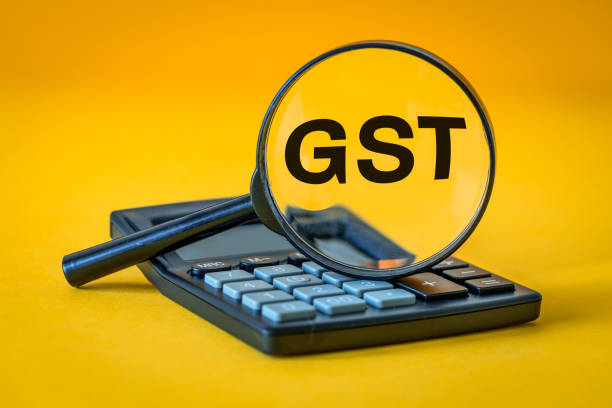
The world of SEO is rapidly changing, and to maintain a competitive edge, you need to be aware of future trends and advanced tips in on-page SEO.
One of the most important current trends is the growing importance of Search Intent.
Google is increasingly focusing on accurately understanding the user’s purpose for searching and providing the most relevant results.
Therefore, your content should not only include keywords but also fully address the user’s hidden intent behind that keyword.
Optimizing for Voice Search has also gained more importance due to the increased use of smart assistants.
This type of search is often longer and more conversational.
The use of structured data (Schema Markup) in more advanced ways to display rich information in search results is also a growing trend.
Additionally, Page Experience, which includes Core Web Vitals, HTTPS security, and mobile-friendliness, will remain a key ranking factor.
For advanced on-page SEO, optimizing for Artificial Intelligence (AI) and Machine Learning (ML) of search engines is also important; this means producing very high-quality and comprehensive content that is well-structured.
Ultimately, focusing on providing real value to the user and creating content that truly solves their problems will always be the most effective strategy in on-page SEO, regardless of algorithm changes.
Frequently Asked Questions
| Row | Question | Answer |
|---|---|---|
| 1 | What is On-Page SEO? | On-page SEO refers to a set of actions performed within a website (on its pages) to improve its ranking in search engine results. This includes optimizing content, site structure, and HTML codes. |
| 2 | Why is On-Page SEO important? | On-page SEO helps search engines better understand page content and determine whether that page is relevant and valuable for user searches. This better understanding leads to higher rankings. |
| 3 | What is the first and most important step in on-page SEO? | Keyword Research is the most important initial step. By finding appropriate keywords, targeted and user-need-relevant content can be produced. |
| 4 | What is the role of the Title Tag in on-page SEO? | The title tag is one of the most important ranking factors and should include the main keyword. This tag is displayed as the page title in search results and influences the click-through rate (CTR). |
| 5 | What is the importance of Meta Description? | The meta description does not directly impact ranking, but by providing an engaging summary of the page content in search results, it can encourage users to click, thereby increasing the click-through rate (CTR). |
| 6 | Why is using headings (H1, H2, etc.) important in content? | Headings help structure content and improve readability for users and search engine crawlers. Using keywords in headings also helps search engines better understand the topic. |
| 7 | What does Image Optimization in on-page SEO include? | It includes compressing images to reduce size, using descriptive and relevant file names, and filling the Alt tag (alternative text) with relevant keywords to help search engines understand the image content. |
| 8 | What is meant by Internal Linking in on-page SEO? | Internal linking refers to creating links between different pages of a website. This helps distribute page authority (Link Equity), improve user experience, and assist search engine crawlers in discovering new pages. |
| 9 | Why is Page Speed important for on-page SEO? | Page loading speed is a direct ranking factor and significantly impacts user experience. Slow pages can lead to an increased bounce rate and decreased user engagement. |
| 10 | What role does quality content play in on-page SEO? | Quality content—comprehensive, unique, and valuable to the user—is the core of on-page SEO. This content not only attracts and retains users but also sends positive signals to search engines, leading to better rankings. |
And other services of Rasaweb Advertising Agency in the field of advertising
Smart Conversion Rate Optimization: A professional solution for increasing website visits with a focus on marketing automation.
Smart SEO: A fast and efficient solution for campaign management with a focus on precise audience targeting.
Smart Advertising Campaign: An effective tool for user engagement through optimizing key pages.
Smart Website Development: A dedicated service for online growth based on custom programming.
Smart Data Analysis: A professional solution for customer acquisition with a focus on attractive user interface design.
And over hundreds of other services in the field of online advertising, advertising consultation, and organizational solutions
Internet Advertising | Advertising Strategy | Advertorial
Resources
Best On-Page SEO PracticesComprehensive On-Page SEO ChecklistTechnical SEO GuideImportant On-Page SEO Factors
? For a powerful presence in the digital world and sustainable growth for your business, Rasaweb Afarin Digital Marketing Agency is your reliable partner, offering services such as WordPress website design, SEO, and social media management.
📍 Tehran, Mirdamad Street, next to Bank Markazi, Kazeroon South Alley, Ramin Alley, No. 6


